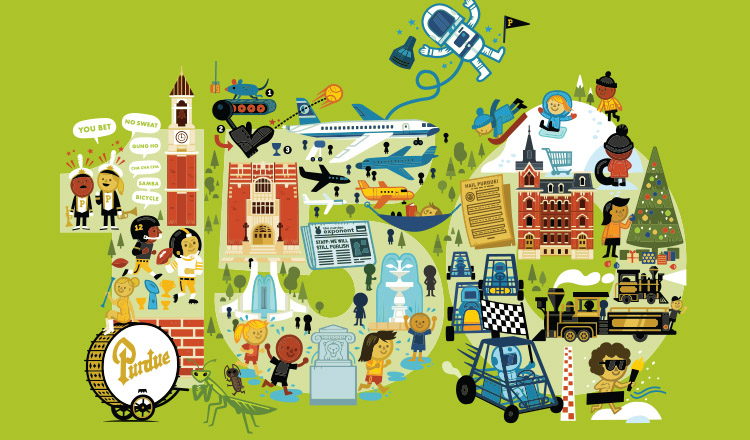Gone but never forgotten
Traditions and landmarks that have been retired
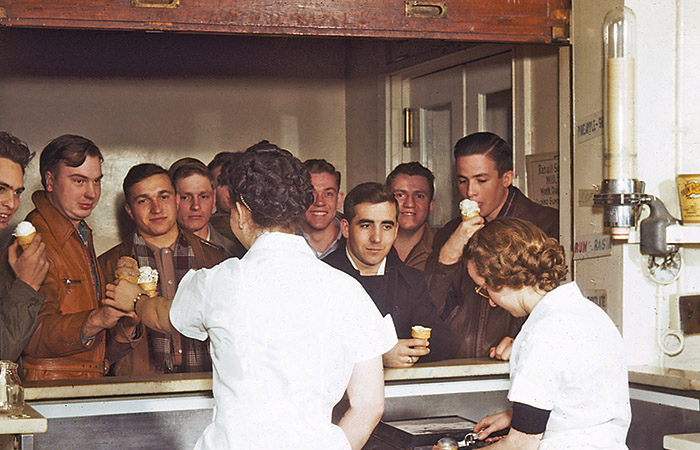
1. Purdue Creamery
Although the Purdue creamery that was located in Smith Hall is no longer around, Purdue Creamery ice cream can be found at Pappy’s Sweet Shop in the Purdue Memorial Union. The ice cream is manufactured using the original formula at Glover’s Ice Cream in Frankfort, Indiana.
2. Sky Room
A favorite hangout of locals and students alike, the Sky Room cafeteria at the Purdue Airport was a popular destination to grab a bite while watching the planes take off.
3. Hall Dinner Dances
Hall dinner dances were an important part of campus life for nearly half a century. With a huge influx of GIs after World War II, the military tradition inspired Purdue’s campus to follow suit. Winter Whisper, sometimes referred to as Winter Whispers, was one of the most popular. Initially a collaboration between X Hall (now Meredith Hall) and Windsor Halls, the celebration grew to encompass Earhart, Cary, and Graduate House West. Snowflake Fantasy, also known as Fantasia, took place at Fowler Courts before it was replaced by Hillenbrand. These soirées consisted of a punch hour, formal dinner, and dancing in the Purdue Memorial Union. Over the years, attendees enjoyed the musical stylings of Tex Beneke, Skitch Henderson, Ralph Marterie, and Al Cobine.
4. Golden Peppers
Contrary to first impressions, Golden Peppers didn’t have anything to do with growing yellow-colored vegetables. The “peppers” part of the name refers to its role as a sort of pep group, and “golden” references Purdue’s school colors. Members of Mortar Board got together to found the group in the mid-1920s to get women on campus more involved in cheering for the men’s sports teams. With the introduction of Title IX and the rise of women’s sports, the group disbanded in the 1970s.
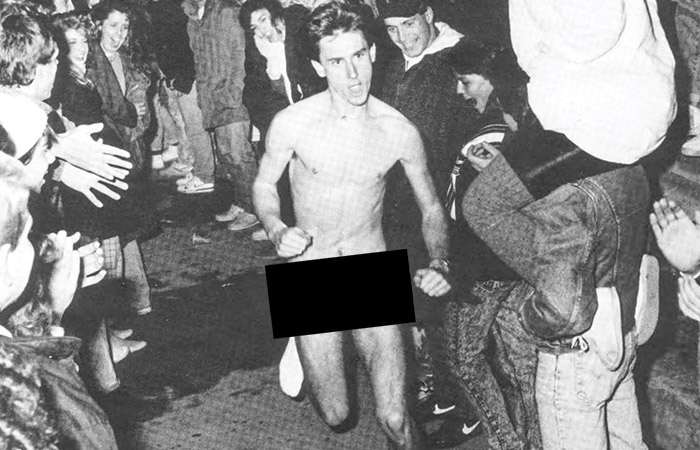
5. Nude Olympics
Originating at some point prior to 1969, the Nude Olympics involved the men of Cary Quad running laps around Spitzer Court during the bitter cold of winter — stark naked. The initial objective was to be the last remaining runner. Typically held on the first subzero night of the second semester, the event was men-only until 1980, when the first woman ran. Purdue tried to curtail the event by photographing participants and having RAs identify them. In 1986, the Nude Olympics were officially banned by administrators who found the event “had gone beyond being just an innocent bit of fun and frolic.” Despite arrests and disciplinary measures, runners and spectators continued to gather until at least 1995.
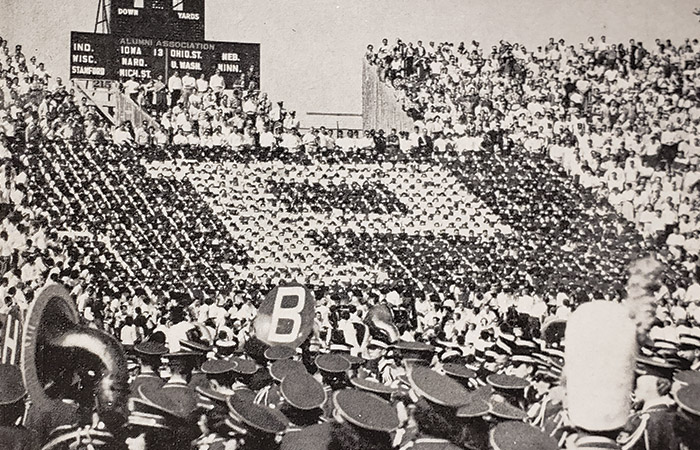
6. Card Section
Purdue’s card section debuted in 1954 and lasted approximately 20 years. Many Big Ten teams boasted card sections, but Purdue’s was the only one in the country with only freshmen for members. The freshmen traditionally sat in the worst seats at the top of the north end zone, under the scoreboard at that time. That section of the stadium was in plain view of the rest of the crowd, making it an ideal location to flash the cards and create a Block P, unfurl an American flag during the national anthem, and perform other moving stunts. As the freshmen flashed the cards, the sophomores fed them the cards from one side and collected them from the other side. James Seaton (ECE’55, MS NE’62), head cheerleader and founding member of the card section, noted that seed money for the endeavor was provided by H. G. Reisner’s Deac’s Bookstore, which purchased the first set of flash cards. Each freshman paid 50 cents, ensuring their commitment to not toss or rip the cards.
7. Victory Varieties
Al Stewart (-S’31) started Victory Varieties during World War II as a way of boosting morale as the campus pulled together to support the war effort. The first performance attracted more than 2,000 people to see Milt Britton and Bonnie Baker. Victory Varieties lasted for a quarter of a century and attracted the top names in entertainment to West Lafayette, including Bob Hope, Louis Armstrong, Jack Benny, Danny Kaye, Fred Waring, Rosemary Clooney, Ed Sullivan, Johnny Mathis, the Kingston Trio, Count Basie, Woody Herman, Simon & Garfunkel, and dozens of other entertainers. During one visit, Hope stared out at the far corners of Elliott Hall and quipped, “they could have staged World War II in here!”
8. Seniors Beards or Mustaches
Senior beards (or mustaches) were a beloved rite of passage for many a Purdue student over the years. Trusting that parents wouldn’t force their sons to shave over the winter break, Purdue men would proudly sport their facial hair up until graduation day, when they would finally shave to show they were moving on to a fresh chapter in their lives.
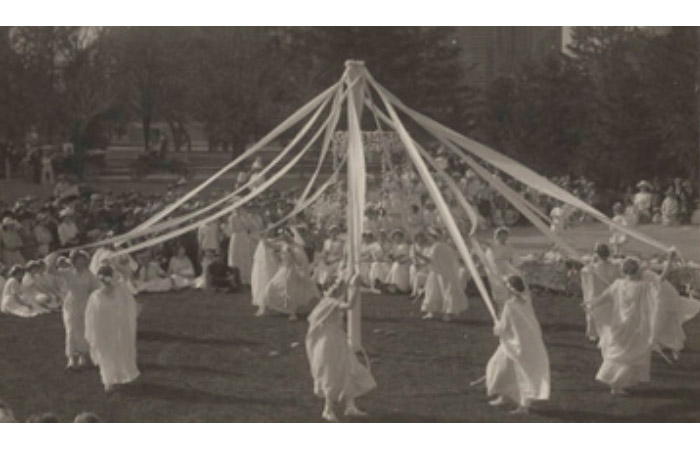
9. May Day
Held outside on what is now called Memorial Mall, May Day activities were meant to give female students an event of their own, since most campus events at that time were geared toward men. The festivities included a play or interpretive dance; coronation of female students given honorary titles, such as May Queen and Maid of Honor; and a maypole dance. The first May Day celebration was held in 1913 and continued for several years until it evolved into other events.
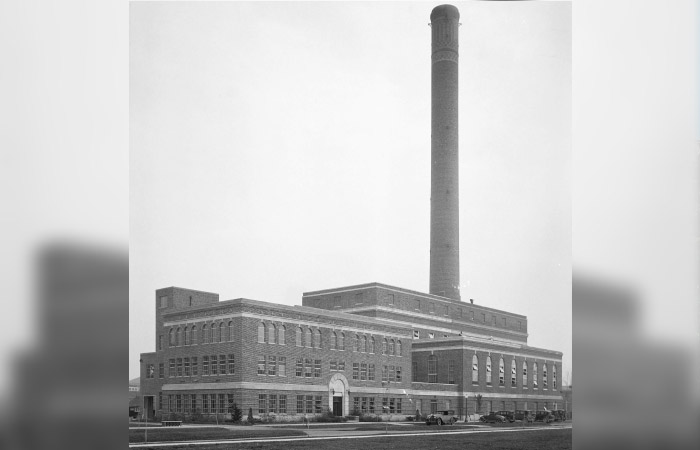
10. Smokestack
The old smokestack was built in 1925 when the first part of the old north power plant was built. Though it was originally 250 feet tall, structural deterioration meant that the smokestack needed to be reduced nearly 50 feet in height over a two-decade period. By 1991, the smokestack met its demise after the final boilers were retired. While many on campus were sorry to see the defunct structure go, it needed to be removed for safety reasons.
11. Mechanics Burning
For years, Mack E. Nick was the most wanted man on campus. At the end of each semester, his victims — freshmen engineering students — got together and held a trial for him. On finding Mack E. Nick (sound it out) guilty, they would punish him by setting him afire. Usually burning their mechanics books sufficed, but an effigy of Mack appeared from time to time. The University put an end to the mock trials in 1913, but we bet that freshmen engineering students’ feelings probably haven’t changed much in the century since.
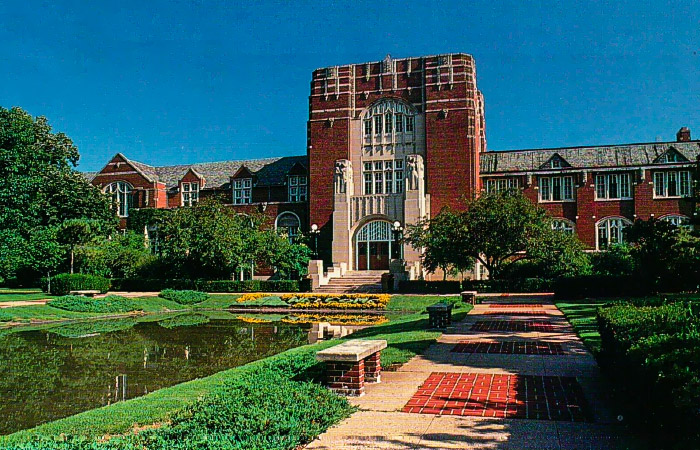
12. Reflection Pool
The reflection pool — commonly known as the scum pond — was a beloved landmark on Purdue’s campus. Measuring an impressive 85 by 42 feet, the water feature was installed outside the south doors of the Purdue Memorial Union in the late 1950s. The high cost of maintenance eventually led to the reflection pool’s removal — during the summer, it had be drained and cleaned on a weekly basis to combat the scourge of the infamous scum that gave the pool its pet name. The class of 1953 raised funds to renovate the Union’s south lawn, and new walkways and landscaping replaced the pool in 2004.

